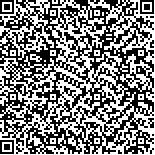| 摘要: |
|
| 关键词: |
| DOI: |
| Received:October 15, 2010Revised:October 15, 2010 |
| 基金项目:This work was supported by National Natural Science Foundation (No. 60935001, 60874104), 973 Project (No. 2009CB824900, 2010CB734103), and the Shanghai Key Basic Research Foundation (No. 08JC1411800). |
|
| Analysis of quantization noise and state estimation with quantized measurements |
| Jian XU,Jianxun LI,Sheng XU |
| (Department of Automation, Shanghai Jiao Tong University;College of Mechanical Engineering, Chongqing University) |
| Abstract: |
| The approximate correction of the additive white noise model in quantized Kalman filter is investigated under certain conditions. The probability density function of the error of quantized measurements is analyzed theoretically and experimentally. The analysis is based on the probability theory and nonparametric density estimation technique, respectively. The approximator of probability density function of quantized measurement noise is given. The numerical results of nonparametric density estimation algorithm demonstrate that the theoretical conclusion is reasonable. Based on the analysis of quantization noise, a novel algorithm for state estimation with quantized measurements also is proposed. The algorithm is based on the least-squares estimator and unscented transform. By least-squares estimator, the effective information is extracted from the quantized measurements. Also, using the information to update the estimated state can give a better estimation under the influence of quantization. The root mean square error (RMSE) of the proposed algorithm is compared with the RMSE of the existing methods for a typical tracking scenario in wireless sensor networks systems. Simulations provide a strong evidence that this tracking algorithm could indeed give us a more precise estimated result. |
| Key words: Wireless sensor networks Quantized observations Nonparametric density estimation Least-squares method Unscented transform |

